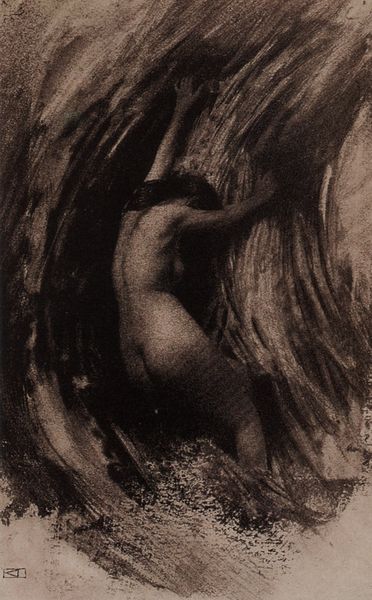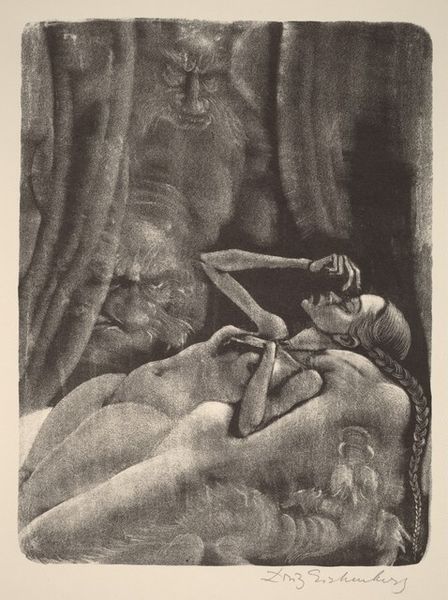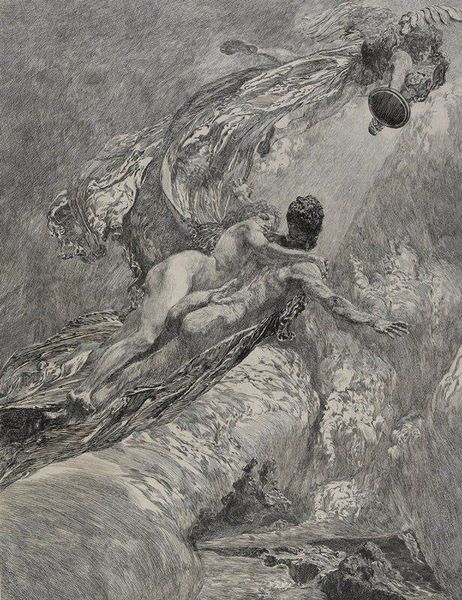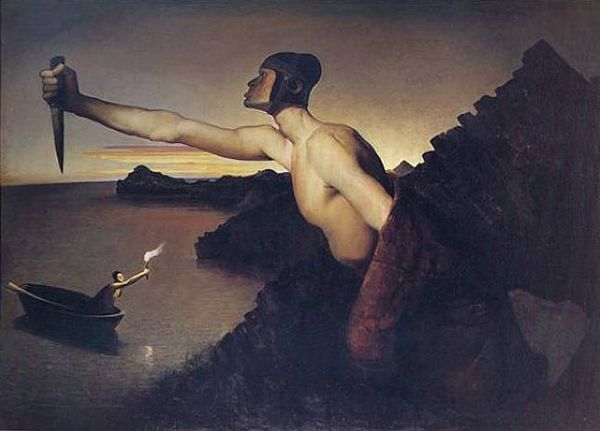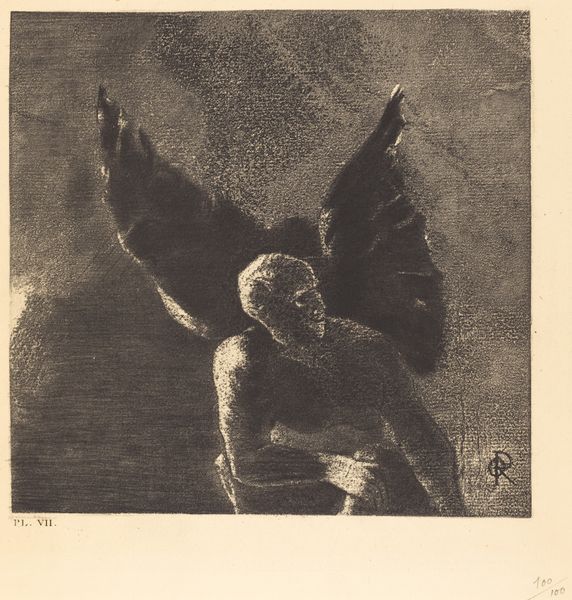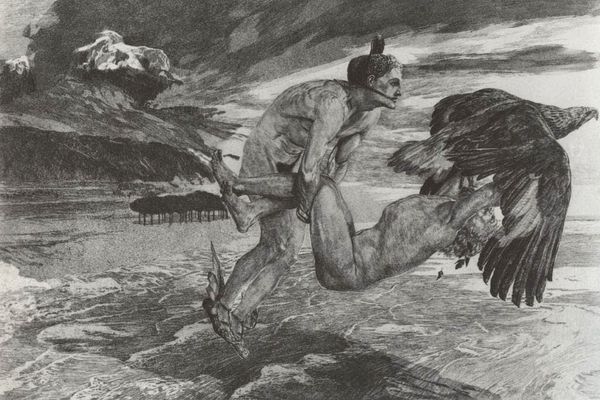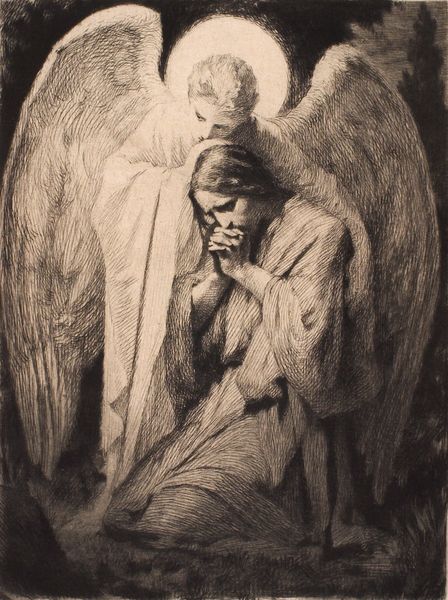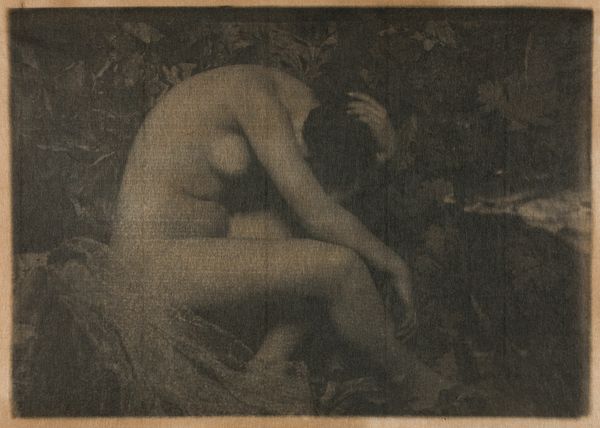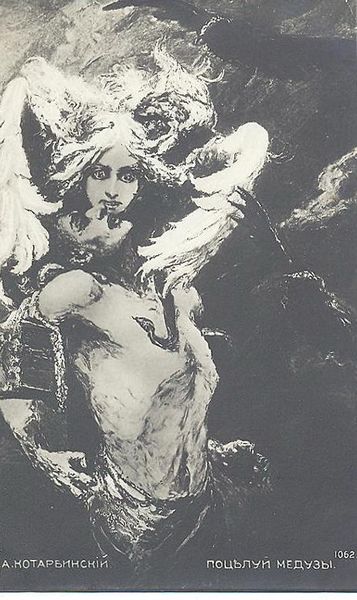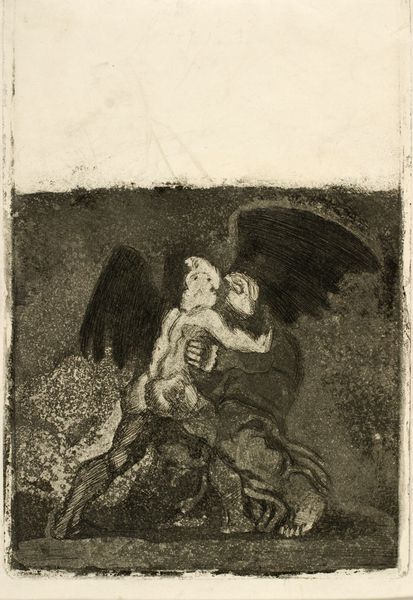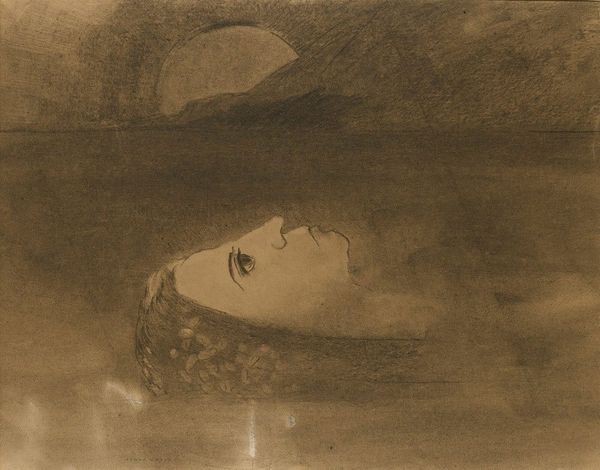
Dimensions: 24 x 36 cm
Copyright: Public domain
Editor: This is Odilon Redon's "Fallen Angel," created in 1872 using charcoal. The figure looks heavy, burdened. It's all these layers of charcoal, creating such a dense atmosphere. What can you tell me about it? Curator: It's fascinating to consider Redon's choice of charcoal, a humble material, for a subject as grandiose as a fallen angel. Notice how the intense blacks and hazy grays seem to emerge organically from the paper itself, blurring the line between the figure and the ground. Do you think this speaks to a certain democratization of art-making? Editor: Democratization? You mean, like, using cheaper materials? Curator: Exactly! Rather than oil paints and elaborate canvases of the Academy, Redon chose charcoal. It suggests a more accessible, even industrial, mode of creation. Charcoal is, after all, a product of burning, of reduction. Perhaps Redon is drawing a parallel between the angel’s fall and the material transformation he employs. The ethereal and the earthly collapsing in on themselves. What implications might the subject’s nudity have in terms of the labor inherent to this collapse? Editor: Hmm, it makes me think about how angels are often presented as these idealized beings, but here, he’s literally down to earth, vulnerable, almost as if labor has stripped him bare. It kind of reframes the whole narrative of the fallen angel. Curator: Precisely! It prompts us to reconsider the processes by which ideals are made manifest and the social realities masked by those processes. It's about grounding the symbolic. Editor: This makes me think differently about the art I see. Thank you. Curator: Likewise. Analyzing art through materials and processes makes history more immediate and helps reveal how meaning is truly constructed.
Comments
No comments
Be the first to comment and join the conversation on the ultimate creative platform.
